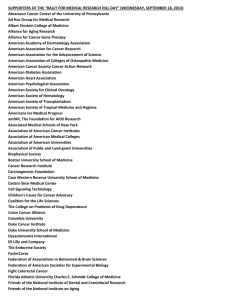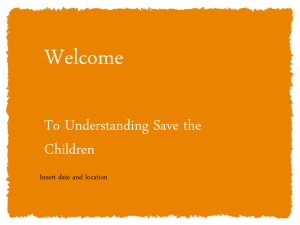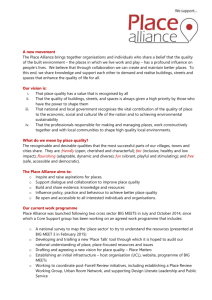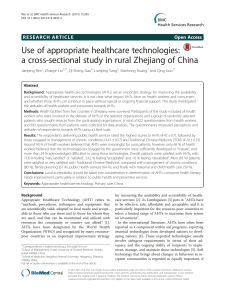walks middle
advertisement
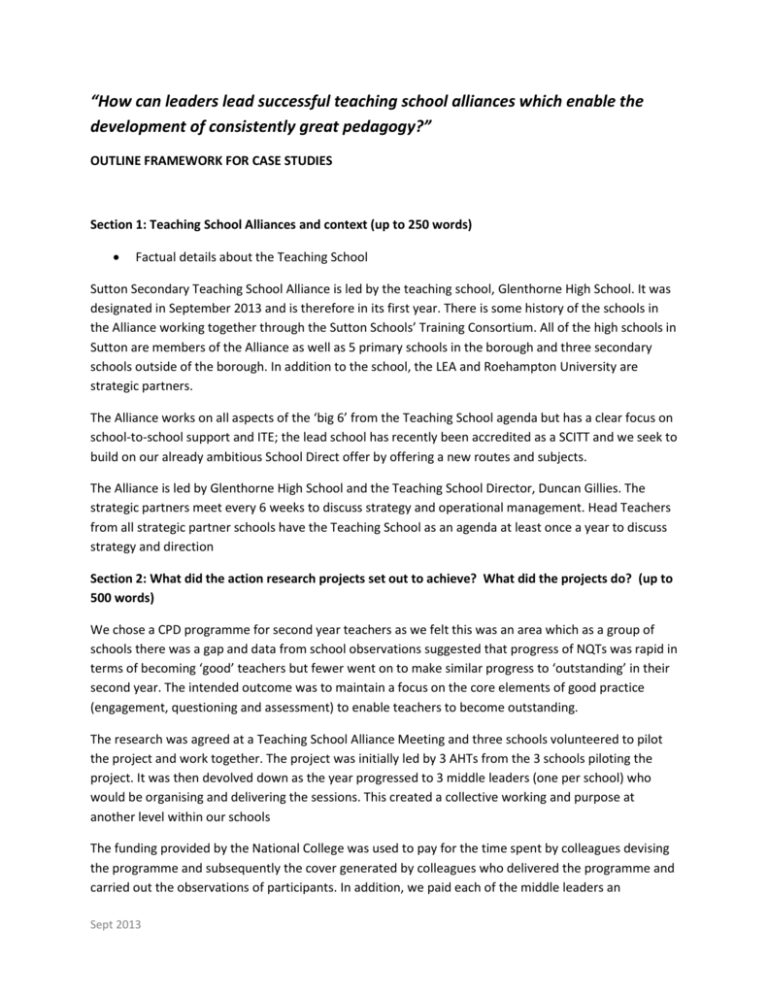
“How can leaders lead successful teaching school alliances which enable the development of consistently great pedagogy?” OUTLINE FRAMEWORK FOR CASE STUDIES Section 1: Teaching School Alliances and context (up to 250 words) Factual details about the Teaching School Sutton Secondary Teaching School Alliance is led by the teaching school, Glenthorne High School. It was designated in September 2013 and is therefore in its first year. There is some history of the schools in the Alliance working together through the Sutton Schools’ Training Consortium. All of the high schools in Sutton are members of the Alliance as well as 5 primary schools in the borough and three secondary schools outside of the borough. In addition to the school, the LEA and Roehampton University are strategic partners. The Alliance works on all aspects of the ‘big 6’ from the Teaching School agenda but has a clear focus on school-to-school support and ITE; the lead school has recently been accredited as a SCITT and we seek to build on our already ambitious School Direct offer by offering a new routes and subjects. The Alliance is led by Glenthorne High School and the Teaching School Director, Duncan Gillies. The strategic partners meet every 6 weeks to discuss strategy and operational management. Head Teachers from all strategic partner schools have the Teaching School as an agenda at least once a year to discuss strategy and direction Section 2: What did the action research projects set out to achieve? What did the projects do? (up to 500 words) We chose a CPD programme for second year teachers as we felt this was an area which as a group of schools there was a gap and data from school observations suggested that progress of NQTs was rapid in terms of becoming ‘good’ teachers but fewer went on to make similar progress to ‘outstanding’ in their second year. The intended outcome was to maintain a focus on the core elements of good practice (engagement, questioning and assessment) to enable teachers to become outstanding. The research was agreed at a Teaching School Alliance Meeting and three schools volunteered to pilot the project and work together. The project was initially led by 3 AHTs from the 3 schools piloting the project. It was then devolved down as the year progressed to 3 middle leaders (one per school) who would be organising and delivering the sessions. This created a collective working and purpose at another level within our schools The funding provided by the National College was used to pay for the time spent by colleagues devising the programme and subsequently the cover generated by colleagues who delivered the programme and carried out the observations of participants. In addition, we paid each of the middle leaders an Sept 2013 honorarium of £500 for time spent writing the sessions. Finally, approximately 10% of the budget has been spent on administration. The CPD programme involved a series of CPD sessions for the second year teachers delivered by middle leaders in our schools. The sessions involved some direct teaching and reflection on the literature and learning walks in trios (from different) schools followed by reflection on outstanding practice and improvements to make in participants own practice (see below). Three schools were involved in sending participants and in delivering the sessions. During the year the process was changed in a number of different ways: Firstly, one of the key adjustments was the shift from AHTs leading the programme to the middle leaders from different schools making the adjustments. Secondly, In the pilot sessions in the autumn term participants commented on the fact that they valued the learning walks in trios and the opportunity to reflect on the excellent practice they had seen with colleagues from different schools. They also valued the opportunity to reflect on their practice using the literature but felt the structure of the programme didn’t enable this to happen. The participants’ views were supported by the facilitators who felt there was a break between the taught sessions and the learning walks didn't work. As a result, the middle leaders amended the programme to begin with learning walks focussed on a theme and then reflect on that theme afterwards. In addition, literature would be provided online through our Teaching School website for the participants to access and reflect on prior to the learning walks Thirdly, teacher self-efficacy questionnaires were used to measure the progress participants felt they had made during the programme but this data wasn’t collected effectively in the first pilot session by the middle leaders facilitating the sessions. This in turn became a priority and responsibility of the AHTs to collect and record data so this could then be tracked. Finally, the programme also involved data to be collected from lesson observations of participants before the session began and after the session began using an observation form specifically designed for the programme. The observation data would be used to inform us if the programme had helped improve the teaching in those areas across the cohort and for each specific session; engagement, assessment and questioning (see appendix a). Initially during the pilot programme, the lesson observations weren’t completed due to time constraints for the middle leaders delivering the sessions. For the second cohort time was made available for the middle leaders but there were issues with usage of the forms. In the final cohort in consultation with AHTs we dropped these in favour of general observation data. Sept 2013 Initial Programme: Session Topic 1 Teaching in your second year Active Engagement taught sessions Timing 4-5.30 2 1.30 – 5.30 3 4 Learning Walk in trios Reflections on Active Engagement Assessment taught session Learning Walk in trios Reflections on Assessment Effective Questioning taught session Learning Walk in trios Reflections on Effective Questioning What have I learnt from the programme 1.30 – 5.30 1.30 – 5.30 Adjusted Programme: Sessions Timing & Venue · Learning Walk in trios 1-4.30 Held at Glenthorne · Reflections on Effective Questioning · Learning Walk in trios · Reflections on Active Engagement · Learning Walk in trios · Reflections on Assessment · Observation of an outstanding lesson · Reflections and action going forward 1.30 – 4.30 Held at Greenshaw 1.30 – 4.30 Held at Carshalton Boys 1.30 – 4.30 Held at own school or Glenthorne Section 3: Impact on capability of teachers and learning of pupils (up to 400 words) Our assessment of changes in teaching and learning methods was through the observation form (Appendix A) discussed in the previous section. In the final cohort, the observations were completed Sept 2013 Overa ll Observation Observation 1-4 1-4 Overa ll Participant 1 2 1 2 2 2 3 1 1 4 3 2 5 2 2 6 2 2 7 2 2 8 3 2 9 3 2 10 2 1 11 2 1 12 1 1 Improvement with the AHTs before and afterwards but it was decided the forms were an imperfect way to measure progress of participants and just ticking boxes on the forms if you saw it in the lesson didn’t give a real indication of progress in teaching. As a result, we decided to share our general observation data of the teachers on the final cohort to see if progress had been made. We accept this is also subjective but it is set against Ofsted criteria despite our interpretations potentially being different. The final cohort of 12 second year teachers was judged as follows within their schools: ↑ → → ↑ → → → ↑ → ↑ ↑ → The data suggests just less than half made progress with their teaching in the year. It is evident though that it was teachers who had previously been judged as 3 who were more likely to make progress. As the programme was initially not designed to support these teachers but those already ‘good’ the impact of the NQT+1 programme may have been less. In addition, participating schools all have intervention strategies for teachers graded at 3 which may mean the work within schools may also have played a key factor in raising the observation grades The feedback from participants (12 in the last cohort) in the final cohort suggests they found the sessions useful in general and the learning walks and post session discussion was far more useful than the literature. There is little difference between the different sessions. Programme Overall Learning Walks Literature provided Sept 2013 Excellent 2 2 Good 8 9 7 Satisfactory 2 1 4 Unsatisfactory 1 Post session learning Questioning Session Engagement Session Assessment Session 3 1 5 2 8 10 6 9 1 1 1 1 In the free comments there was a theme in terms of impact on practice: 8 of the commented on seeing outstanding practice in other schools and being able to apply this. 2 of the others who didn’t comment on other schools noted the learning walks were valuable 9 of the participants commented that discussion with others/sharing practice/resources was really valuable to them The self-efficacy survey results (below) are inconclusive in terms of impact. In some areas participants have made no progress, in fact there appears to have been a decline in confidence in some areas. The data does suggest overall that participants have grown in confidence in more areas than where this isn’t the case although you expect confidence to grow naturally during the year. There appears to be little difference in terms of increasing confidence in any of three areas engagement, assessment, questioning and the three questions which weren’t applicable to the session which agrees with the feedback on the sessions above. On reflection the survey really needs a bigger scale to enable participants to reflect bigger changes in their progress. In addition, we should have recorded names which would have enabled us to track the changes of individuals. Going forward we will be using interviews with participants to support and triangulate the findings from the self –efficacy results. The focus of the sessions was on engagement, assessment and questioning. The relevant questions are highlighted. Overall assessment of progress Questions How well do you motivate all students who show a low interest in work? How well do you think you motive students who show a low level of interest in tasks? How much can you do to get students to believe they can do well in their schoolwork? How confident do you think students are in engaging in Sept 2013 Scale of 1-5 Ave before the sessions 3.67 Scale of 1-5 Ave after the sessions 3.6 Difference 3.55 3.8 +2.2 4 4.2 +0.2 4.1 4.7 +0.6 -0.07 conversation with you and other students? How much can you help your students value their learning? To what extent do you cater for students learning needs? To what extent are you motivated about the subject content you teach? How often do you provide students with the opportunity to discuss and share their work? How much can you help students to engage in their own learning? I am confident in posing effective questions? To what extent does your questioning allow all learners to achieve the learning objectives in a lesson? To what extent does your questioning help learners reach explanations and understanding of their own learning? I use a wide range of assessment strategies? To what extent does assessment feature in your lessons? How confident are you in using a range of assessment methods in the classroom? How confident are you in planning an outstanding lesson? 3.9 3.8 -0.1 3.58 3.6 +0.02 4.6 4.4 -0.2 4.33 4.3 -0.03 3.82 3.6 -0.12 3.33 3.6 +0.23 3.33 3.2 -0.11 3.42 3.8 +0.38 3.5 3.2 -0.3 3.67 3.8 +0.13 3.75 4 +0.25 3.58 3.6 +0.02 Overall the impact of the sessions is unclear and without more rigorous data set , a control group and more in-depth qualitative investigation the conclusions are provisional. Sept 2013 Section 4: Impact on the alliance and alliance partners (up to 300 words) The three schools coordinating and leading the project were very much involved and after the pilot project the middle leaders from the different schools took the initiative to update, amend and improve the programme following initial feedback from participants and their own understanding. In terms of the broader Alliance, reports on the project were an agenda point at each TSA meeting but only two of the other schools within the Alliance sent participants on the programme although more have expressed interest for this coming year. In terms of broader working in the Alliance, it is a very small aspect of our work in ITE tends to dominate our alliance a draw partners in. The project has assisted in our alliance ‘maturing’ in a number of ways. Firstly, there has been joint practice development in terms of the CPD programme itself and the evolving of the programme through the course of the year which I anticipate will continue through this year. Secondly, the process of passing the ownership and responsibility to middle leaders has developed distributed leadership and widened the knowledge of the Teaching School. Finally, the fact that the evaluation and development of the project has been in the hands of middle leaders has allowed a growth in the creativity. In broader terms it hasn’t really changed how partners work together in its own right but it is part of a whole package of work the Teaching School has undertaken. We have recently become accredited as a SCITT and view the NQT+1 programme as being central to the continuation of training from QTS, NQT induction and then NQT+1. Section 5: Teaching School Alliance leadership learning (500 words) Summarise the feedback about the leadership skills and behaviours which the learning logs suggested were important in implementing the projects The key to working across alliances is to ensure planning is conducted together, there is a clear understanding of the objectives of the session and this is communicated to schools clearly as well as participants. We amended our trial run following feedback from the participants involved and listening to feedback helped us develop the programme. Initially by directing and leading of the project personally and planning too much myself there was too little buy in and understanding. As soon as I passed the planning design and review to middle leaders delivering the sessions the project moved forward much more quickly and the shared ownership at middle leader level in schools created additional understanding of the objectives throughout schools. Essentially, directed work from senior leaders does not always work Leadership needs to come from middle leaders within our alliance working collaboratively under the guidance and mentoring of senior leaders. Projects should be passed down as long as there is an understanding of common aims and objectives and the structures are in place to review the impact of these effectively. Sept 2013 However, even if common objectives may be understood and the impact may be happening at middle leader level the priorities, capacity and time of the middle leaders mean certain things still need to be coordinated centrally by senior leaders who also need to take control of certain things: Data Timelines Releasing Colleagues Planning timings more effectively in terms of school year Senior Leaders also need to: be careful with when you plan things as crunch points in the year as certain things take priority in schools to take responsibility for certain things e.g. data and planning for time for colleagues to complete work (observations) at crunch times – although planning timings A key area of learning has been the building of trust between schools especially as the more we have middle leaders working together across schools the more understanding there is of our common objectives and how we can work together to achieve these. We will be continuing with running this programme. Sept 2013



